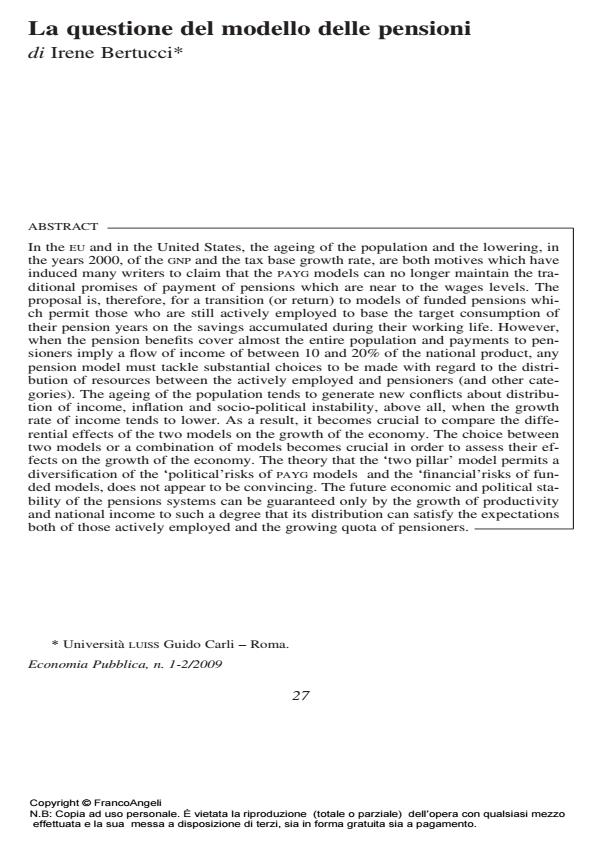La questione del modello delle pensioni
Journal title ECONOMIA PUBBLICA
Author/s Irene Bertucci
Publishing Year 2010 Issue 2009/1-2
Language Italian Pages 30 P. 27-56 File size 1023 KB
DOI 10.3280/EP2009-001002
DOI is like a bar code for intellectual property: to have more infomation
click here
Below, you can see the article first page
If you want to buy this article in PDF format, you can do it, following the instructions to buy download credits

FrancoAngeli is member of Publishers International Linking Association, Inc (PILA), a not-for-profit association which run the CrossRef service enabling links to and from online scholarly content.
In the EU and in the United States, the ageing of the population and the lowering, in the years 2000, of the GNP and the tax base growth rate, are both motives which have induced many writers to claim that the PAYG models can no longer maintain the traditional promises of payment of pensions which are near to the wages levels. The proposal is, therefore, for a transition (or return) to models of funded pensions which permit those who are still actively employed to base the target consumption of their pension years on the savings accumulated during their working life. However, when the pension benefits cover almost the entire population and payments to pensioners imply a flow of income of between 10 and 20% of the national product, any pension model must tackle substantial choices to be made with regard to the distribution of resources between the actively employed and pensioners (and other categories). The ageing of the population tends to generate new conflicts about distribution of income, inflation and socio-political instability, above all, when the growth rate of income tends to lower. As a result, it becomes crucial to compare the differential effects of the two models on the growth of the economy. The choice between two models or a combination of models becomes crucial in order to assess their effects on the growth of the economy. The theory that the "two pillar" model permits a diversification of the "political"risks of PAYG models and the "financial"risks of funded models, does not appear to be convincing. The future economic and political stability of the pensions systems can be guaranteed only by the growth of productivity and national income to such a degree that its distribution can satisfy the expectations both of those actively employed and the growing quota of pensioners.
Irene Bertucci, La questione del modello delle pensioni in "ECONOMIA PUBBLICA " 1-2/2009, pp 27-56, DOI: 10.3280/EP2009-001002